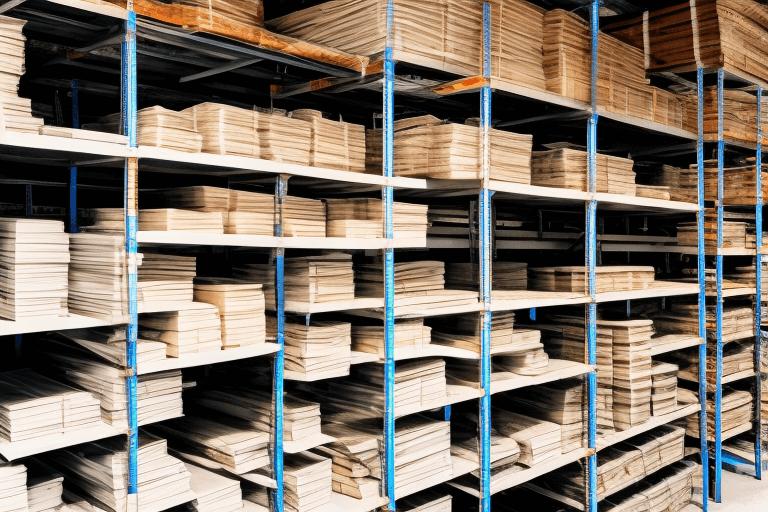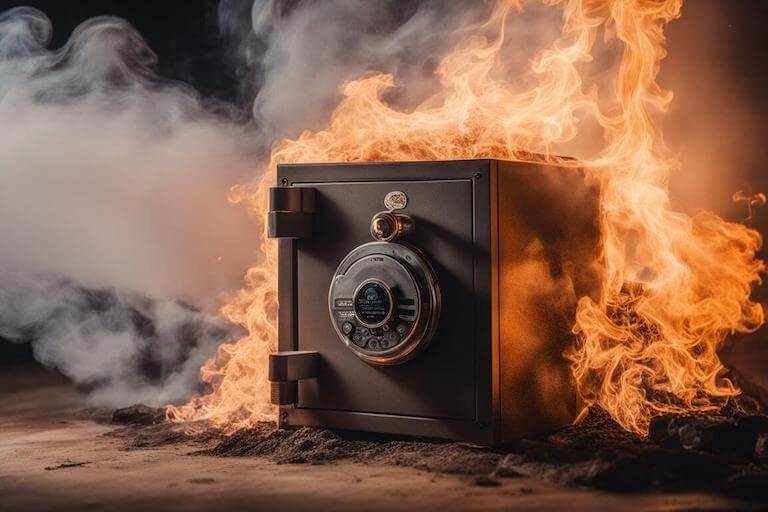
What Are Fire-Resistant Safes Made Of? Unveiling the Secrets
Fireproof safes are an essential investment for protecting valuable items and documents from the devastating effects of fire. In this comprehensive guide, we delve into the intricate world of fireproof safes, uncovering the materials that make them resistant to fire and heat.
From the common materials used to the latest innovations and future prospects, this article will provide a deep understanding of what fireproof safes are made of.
The Importance of Fireproof Safes
The significance of fire-resistant safes over regular home safes cannot be overstated, especially in safeguarding irreplaceable items such as legal documents, jewelry, and electronic media.
In the event of a fire, these safes offer a protective barrier, ensuring that their contents remain intact and undamaged. Protecting your valuables and sentimental possessions from theft is one thing; knowing they will be also protected should the unthinkable happens, provides additional peace of mind.
Understanding the pivotal role of fireproof safes in preserving important items underscores the necessity to comprehend the materials that empower these safes to withstand extreme temperatures.
By delving into the science behind fireproof materials, we can gain insight into the resilience and durability of these safes, and ultimately make a more informed decision.
When you're ready, know that here at Guardian Safe and Vault, we offer an excellent selection of fire-resistant safes to suit your specific requirements. Choose wisely and protect what matters most.
Understanding Fireproof Materials
The concept of fireproof materials revolves around their ability to withstand high temperatures without undergoing significant structural changes or combustion. These materials are engineered to have a high melting point and low thermal conductivity, enabling them to resist the heat generated during a fire.
Just as important as maintaining structural integrity, however, fireproof materials possess insulating properties that help in maintaining a stable internal temperature within the safe during a fire - typically 350°F (176°C) or less - shielding sensitive contents from the damage induced by high temperatures.
The science of fireproof materials encompasses a diverse range of elements and compounds, each with unique properties that contribute to their fire-resistant nature.
From refractory metals to specialized composites, the selection of fireproof materials involves a meticulous consideration of their thermal stability, structural integrity, and overall performance in extreme heat conditions.
By exploring the characteristics of these materials, we can gain a deeper understanding of the mechanisms that make fireproof safes an effective defense against fire-related damage.
Common Materials Used in Fireproof Safes
The construction of fireproof safes involves the integration of various materials that collectively provide a formidable defense against fire and heat. Among the most common materials used in fireproof safes are steel, gypsum, and ceramic fiber insulation.
Steel serves as the primary structural component, offering robustness and impact resistance while forming a protective enclosure for the safe's contents.
Gypsum, a naturally occurring mineral, is renowned for its fire-resistant properties and is often utilized as a barrier within the walls of fireproof safes, providing insulation and heat absorption capabilities.
Ceramic fiber insulation, composed of refractory ceramic fibers, is commonly used to contribute to the thermal resistance of fire safes by effectively insulating the internal compartment from external heat sources.
This combination of materials creates a synergistic defense system, enabling fireproof safes to maintain their structural integrity and safeguard valuables during fire emergencies.
Different Types of Fireproof Safe Materials
The diversity of fireproof safe materials reflects the varying approaches adopted by manufacturers to achieve optimal fire resistance and durability.
Beyond the common materials mentioned earlier, fireproof safes may incorporate additional elements such as vermiculite, perlite, and fire-retardant sealants to enhance their protective capabilities.
Vermiculite, a naturally occurring mineral, is renowned for its insulating properties and is often utilized as a fire-resistant fill material within the walls and doors of fireproof safes, contributing to their thermal insulation and heat absorption capacities.
Perlite, another mineral with exceptional heat resistance, is employed in fireproof safes to provide insulation and moisture control, further fortifying the safes' ability to preserve their contents in the event of a fire.
Fire-retardant sealants commonly play a crucial role in preventing the infiltration of smoke and hot gases into the interior of fire safes, maintaining a controlled environment that safeguards the items stored within.
Related: How to Prevent (or Deal With) Mold in a Safe
Advantages and Disadvantages of Various Fireproof Safe Materials
Each type of fireproof safe material possesses distinct advantages and limitations that influence its suitability for specific applications and environments.
Steel, as a primary structural material, offers unparalleled strength and impact resistance, making it an ideal choice for safeguarding valuable items from physical threats and unauthorized access. However, the high thermal conductivity of steel necessitates the incorporation of insulating materials such as gypsum and ceramic fiber to mitigate the transmission of heat into the safe's interior.
Gypsum, valued for its fire-resistant properties, provides effective insulation and heat absorption, contributing to the overall fireproof capabilities of safes. Nevertheless, its relatively high density may increase the weight of the safes, posing challenges during installation and transportation.
Ceramic fiber insulation, while excelling in thermal resistance and insulation, requires careful handling due to its fibrous nature and may necessitate specialized manufacturing processes.
By evaluating the advantages and disadvantages of various fireproof safe materials, consumers can make informed decisions when selecting safes that align with their specific protection requirements.
Innovations in Fireproof Safe Materials
The evolution of fire safe materials has been marked by continuous innovation, resulting in the development of advanced solutions that offer enhanced fire resistance and security features.
One notable innovation in fireproof safe materials is the integration of advanced composite materials that combine the strength of steel with the heat resistance of specialized polymers and ceramics. These composite materials exhibit exceptional fireproof properties while reducing the overall weight of the safes, making them more accessible for installation and relocation.
Furthermore, the application of nanotechnology materials has led to the creation of nano-enhanced fire-resistant coatings that provide superior protection against heat and flames. These nanocoatings form a resilient barrier on the surface of the safes, inhibiting the propagation of fire and significantly increasing their resistance to thermal degradation.
The use of advanced fire-retardant additives and intumescent materials has contributed to the development of fireproof safes with enhanced fire sealing capabilities, further fortifying their ability to withstand intense heat and smoke infiltration.
The Future of Fireproof Safe Materials
Looking ahead, the future of fireproof safe materials is poised for remarkable advancements driven by ongoing research and technological innovation.
With a focus on sustainability and environmental compatibility, manufacturers are exploring the integration of eco-friendly fireproof materials that deliver exceptional fire resistance without compromising ecological responsibility.
Bio-based composites and recycled heat-resistant polymers are emerging as promising alternatives, offering renewable and low-impact solutions for fireproof safes.
The convergence of digital technologies and material science is paving the way for smart fireproof safes equipped with sensor-based fire detection systems and advanced fire suppression mechanisms.
These next-generation safes are designed to detect and combat fire outbreaks autonomously, providing an unprecedented level of protection for valuable items and documents. By leveraging the potential of interconnected smart materials and IoT (Internet of Things) integration, future fire-rated safes are poised to redefine the paradigm of fire protection, offering proactive and intelligent defense against fire hazards.
In Summary
In summary, the composition of fireproof safes encompasses a diverse array of materials meticulously engineered to withstand the destructive forces of fire and heat.
From the inherent strength of steel to the insulating properties of gypsum and ceramic fiber, the amalgamation of these materials forms the foundation of most fire safes' resilience.
The stringent testing and certification processes further validate the efficacy of fireproof safes in safeguarding valuable possessions, instilling confidence in their reliability.
As the landscape of fireproof safe materials continues to evolve, the industry is witnessing a wave of innovation and technological integration that promises to elevate the standards of fire protection.
The future holds exciting prospects for eco-friendly materials, smart technologies, and advanced fire-resistant solutions, heralding a new era of fireproof safes that offer unparalleled security and peace of mind.
With a deep understanding of what fireproof safes are made of and the ongoing advancements in their materials, consumers can make informed choices to protect their most cherished belongings.



